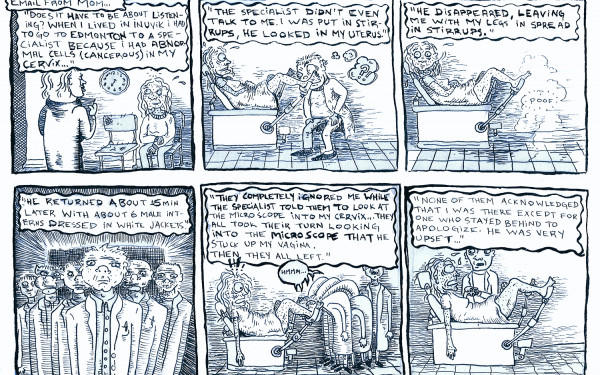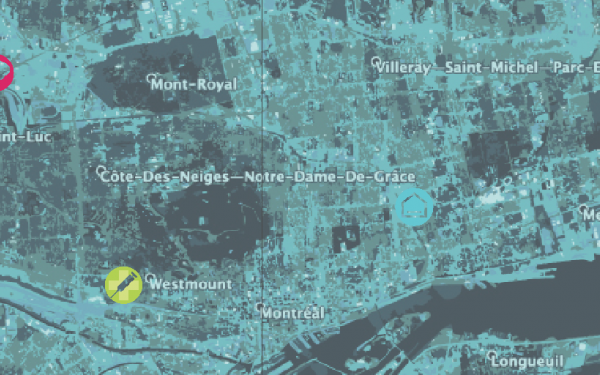Safe Injection Sites: Aiding Addiction In What Way?
Safe Injection Sites Harm
Say what you will about the safe injection site slated to open in Montreal next summer—with or without the approval of the provincial government—but doing heroin takes a certain irresponsibility that this city should not support.
I get that the sites are meant to curb overdoses and the proliferation of diseases like HIV, Hepatitis C and other infections caused by sharing a needle, but Montreal is a place with reachable resources to quit chasing the dragon, so why make the vehicle for drug abuse easier to access?
Though the needle exchange site may potentially be a positive thing, no one knows for sure because it still hasn’t been proven that these centres work to reduce the rates of infection in users. Where is the physical data proving that people who do heroin in these places suffer a lower infection rate than those who shoot up in public? The facts are unquantifiable.
Vancouver—the first city in North America to offer intravenous drug users a safe IV injection space—pays about $2 million annually to operate the facility, with only 31 per cent of users interviewed saying that they would actually use it. It’s a hefty price to pay for something that only a third of heroin users are going to take advantage of. Also, what’s the use if there are already places that give out free, clean needles? And where do the homeless who do dope go once they’re high? They’re still going to be on the streets.
Addiction isn’t a joke—it’s a heartbreaking reality that good-hearted and successful people sometimes fall into it. I can’t imagine how people spend their entire life getting high and throwing it all away, but at a certain stage of addiction drug use isn’t a choice anymore. It just seems like there isn’t a way out. Why not spend the $2 million that would be spent on this project on something that would help people get off the dope and on their feet?
Montreal offers some rehabilitation sites, but these facilities are costly. For instance, Addington House—a drug treatment and addiction centre—costs roughly $18,000 for a three-month program. They do provide some financing, but they don’t hand it out like flyers. What if the $2 million was allocated to places like these to help get drug users back on their feet?
I’ve lived in places where heroin is frequently used and places where a little bit of pot will put you straight to prison or the gallows. Quite frankly, the latter works much better to curb people from trying to catch a buzz. As morbid as it sounds, nothing works better than utter fear to make people comply.
Montreal has one of the highest percentages of drug users in the world, and I’m not saying that we should put the death penalty on people that are afflicted with addiction, I’m just wondering how on earth is a safe injection site a positive step in stopping people from doping up on Ste. Catherine Street?
I’m all about choice, but creating safe injection sites is just a poor choice for Montreal. Even if drugs are easy to find in this city, a safe injection site will just make it that much easier to use them.
-Clay HemmerichThe Opiate Double Standard
Several advocacy groups in Montreal are pushing for the establishment of three safe-injection sites for intravenous drug users. We are told by the Conservative government that we shouldn’t support these types of initiatives, because this would be tacitly approving of drug use in general. Instead, we should be focused on prevention, not spending millions on supporting a bunch of degenerates.
Besides, doesn’t it send the wrong message to allow people to safely shoot-up harmful, illegal drugs?
If the cost-efficiency of a project with normative benefits that include lowering deaths from overdoses and curtailing diseases like HIV (according to the Vancouver Coast Health Authority) must be addressed, for a project that is relatively inexpensive, the sites in Vancouver also saved the city approximately $2.8 million in healthcare-related costs.
But more blatantly, the argument against safe-injection sites also fails to recognize the completely artificial distinctions we draw between different groups of drug addicts in our society. Consider the following two subsections of addicts:
One group makes us uncomfortable. Their condition not only fails to generate sympathy, but they are also stigmatized and ostracized systematically. Any tax dollars spent on them is wasted revenue that could have been spent on more discerning citizens able to avoid the dismal world of drug addiction.
Another group of addicts garners the ever-sincere sympathy of those in power. Their addiction, while certainly not desirable, doesn’t carry the same social stigma and the Conservatives certainly wouldn’t be against measures that help prevent disease and death in their communities.
The problem of these addicts is not some sort of moral defect that is dangerous to society, but simply ignorance of some of the more dangerous properties of an otherwise perfectly laudable and acceptable form of medication.
Both groups are addicted to the same drug, fundamentally. The two drugs have a relatively similar chemical make-up, and very similar side effects and addictive properties.
The first group is, of course, the heroin addicts that the advocacy groups in Montreal are trying to help with safe-injection sites.
The second group I’m talking about is the frightening number of OxyContin addicts in this country.
There were over 2.8 million prescriptions for the pain drug sold in Canada in 2007, and a University of Victoria study found that there were more OxyContin addicts than heroin addicts. Health Canada allowed a potent form of this drug to become available—and subsequently over-prescribed—to a large portion of the population.
Let us consider for a moment the difference in how the government views these two classes of addicts. Health Canada is “concerned” about OxyContin abuse, but the drug remains legal while their conscience is cleansed with those time-tested “education” and “awareness” campaigns—without making a meaningful dent in the amount of OxyContin prescribed, or the amount of black-market OxyContin available.
Someone might get sued eventually, and a company worth billions may have to pay a fine that, for them, is ultimately the equivalent to a speeding ticket, but everyone gets to keep selling and taking their drugs in peace.
Heroin addicts on the street aren’t afforded the same benign distinction. Heroin is an evil to the community. Heroin users are routinely harassed by police and imprisoned, and heroin dealers are parasitic influences on our communities that should be dealt with harshly.
All the while, the great wheels of law and justice turn on, harassing and jailing one type of opiate user while sympathetically extending the olive branch of education and prevention to the other. One group of pushers is beat up, jailed and deprived of establishing a legitimate place in “civilized” society. While the pushers of the other drug, like American pharmaceutical giant Purdue Pharma, pay off the government with hundreds of millions of dollars and avoid jail while continuing to profit massively off their drug. Purdue Pharma also provides OxyContin to Canada, and naturally the same civil litigation strategy is being pursued.
Alleviating the pain of homeless heroin users is not seen as a priority by the Conservative government. Unless, of course, they’re interested in a new, generic, cheaper form of a certain Health Canada approved drug…
-Diego Pelaez Gaetz
This article originally appeared in Volume 31, Issue 17, published January 4, 2011.

__900_271_90.jpg)
_600_832_s.png)

__600_375_90_s_c1.jpg)
_600_375_90_s_c1.jpg)

